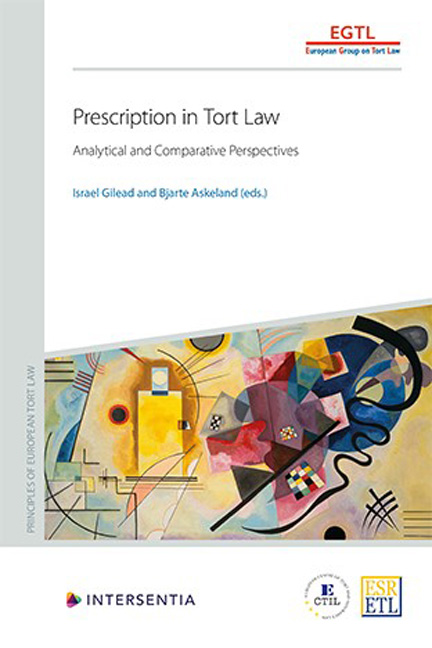Book contents
- Frontmatter
- Dedication
- Acknowledgements
- Contents
- List of Authors
- PART I THEORETICAL AND COMPARATIVE ANALYSES
- Analytical and Comparative Report
- Economic Analysis
- PART II PRESCRIPTION IN TORT LAW OUTLINED
- Case Scenarios
- Austria
- Belgium
- Czech Republic
- England and Wales
- France
- Germany
- Greece
- Italy
- The Netherlands
- Norway
- Poland
- South Africa
- Spain
- Switzerland
- United States
- European Union
- Appendix: Questionnaire
- About the Editors
Appendix: Questionnaire
Published online by Cambridge University Press: 22 December 2020
- Frontmatter
- Dedication
- Acknowledgements
- Contents
- List of Authors
- PART I THEORETICAL AND COMPARATIVE ANALYSES
- Analytical and Comparative Report
- Economic Analysis
- PART II PRESCRIPTION IN TORT LAW OUTLINED
- Case Scenarios
- Austria
- Belgium
- Czech Republic
- England and Wales
- France
- Germany
- Greece
- Italy
- The Netherlands
- Norway
- Poland
- South Africa
- Spain
- Switzerland
- United States
- European Union
- Appendix: Questionnaire
- About the Editors
Summary
In the course of the analytical and comparative discussions following this Questionnaire some changes were made in the cases, in the order of the topics discussed and in the suggestions made. Therefore there are some differences in this regards between the Questionnaire and the final reports.
INTRODUCTION
The aim of the project is to explore how (and why) the passage of time on an alleged tort law claim affects (and should affect) the claim, the parties (P the plaintiff and D the defendant) and other parties through the defence of prescription (limitation of actions).
DEFINITION OF PRESCRIPTION
Prescription in tort law is a legal institution that prevents P from enforcing an alleged right against D because of the running of a specified period of time on the tort claim. In the context of tort law the subject of prescription is usually the right to tort remedy, mainly the right to damages for harm caused. This right to remedy is a right that comes into being once a right imposed by tort law, such as the right to bodily and property integrity, and the right to reputation, is breached (some jurisdictions distinguish in this regard between a primary right and a secondary right to remedy). For the purpose of this project, claims for professional malpractice are also considered as tort claims, although in some jurisdictions they are treated as contractual claims, as long as they are based on grounds of tortious conduct (eg breach of a standard of care).
Question– Does this definition suit your jurisdiction ? Other definitions?
THE NATURE OF PRESCRIPTION AND ITS EFFECTS
There are different ways by which prescription prevents P from enforcing an alleged right of remedy against D. Its effect may be: (a) to extinguish P's right to remedy; (b) to provide D with a substantive defence that prevents P from enforcing the right to remedy although it is not extinguished; (c) to provide D with a procedural defence that bars P's ability to litigate the right in courts.
- Type
- Chapter
- Information
- Prescription in Tort LawAnalytical and Comparative Perspectives, pp. 727 - 746Publisher: IntersentiaPrint publication year: 2020

